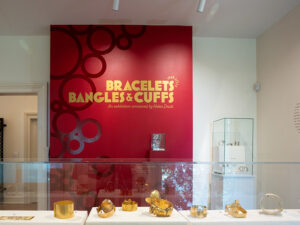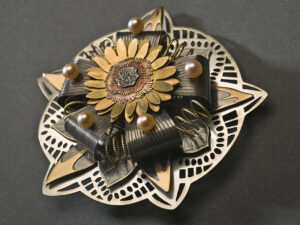Adriane Dalton: Meg Shiffler, you and Mia McEldowney were colleagues as well as friends. Can you provide our readers with some background about Mia, and your relationship? How did the two of you become acquainted?
Meg Shiffler: I moved to Seattle in 1989 to work as a stage manager at Seattle Rep and ACT. After a few years working in the theater, I decided that, although I loved it, I was seeking a more stable life. I answered an ad for a gallery assistant at Mia Gallery. Somehow, I convinced Mia, who owned the gallery, that my background as a stage manager and my minor in art history qualified me for the job. Over the next six years I learned the business and worked my way up to gallery manager, overseeing the staff, building relationships with clients and artists, coordinating our presence at many art fairs, and managing daily activities.
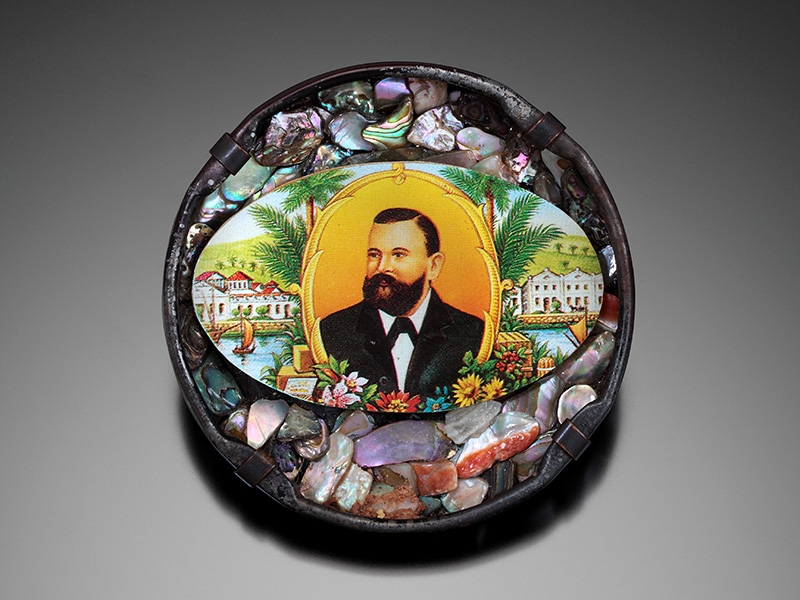 Mia was my boss and my friend, but mostly she was my mentor. I still value the lessons she taught me:
Mia was my boss and my friend, but mostly she was my mentor. I still value the lessons she taught me:
- Be respectful, kind, and patient with ALL art viewers, and make sure that they know that enjoying and understanding contemporary art is accessible to everyone. Speak to everyone who comes in the gallery, and communicate with care, as if they were your family. I watched her do this every day, and respected her immensely for it. Now I teach my own staff to operate in the same generous way.
- Figurative and narrative art will always be at the core of what I love. She taught me to listen carefully to artists and embrace the stories they wanted to tell, but to also read the work in order to form my own perspective on the narrative. She was a sucker for a great story, and didn’t care if it came from a highly skilled artist with an MFA or a self-taught artist responding to tradition or working from the gut.
- Probably the most important piece of advice she ever gave me was to not work with mean people or artists, no matter how brilliant they are. To this day I hear her voice in my ear saying, “It’s just not worth it.”
 What was Mia drawn to as a collector of art jewelry? What did she covet?
What was Mia drawn to as a collector of art jewelry? What did she covet?
Meg Shiffler: As mentioned above, Mia loved a good story above all else. Although we had jewelry artists working in more abstract or geometric forms, it was the narrative artists she was most drawn to, like Laurie Hall, Kiff Slemmons, Ken Bova, and many others. She also loved color and texture. For example, she particularly loved to wear work (earrings and pins primarily) by Ken Bova because they had layers and layers of colors, shapes, small objects, and photographs.
Did she personally wear all of the pieces in this show?
Meg Shiffler: Oh, yes. Mia was only five feet tall, but she wasn’t afraid to wear very large pieces of jewelry. In fact, I rarely saw her without art jewelry on. Even if she was just wearing a T-shirt and leggings, she’d have on a pin or earrings. I’ve never thought about it before, but I believe that you have to be a people person to wear that much art jewelry. I remember people stopping her on the street to talk to her about a pin or neckpiece. I remember people at openings and parties leaning in really close, truly occupying intimate personal space, to get a better look at something, and Mia would just smile and tell them about the background of the piece, or why she loved it.
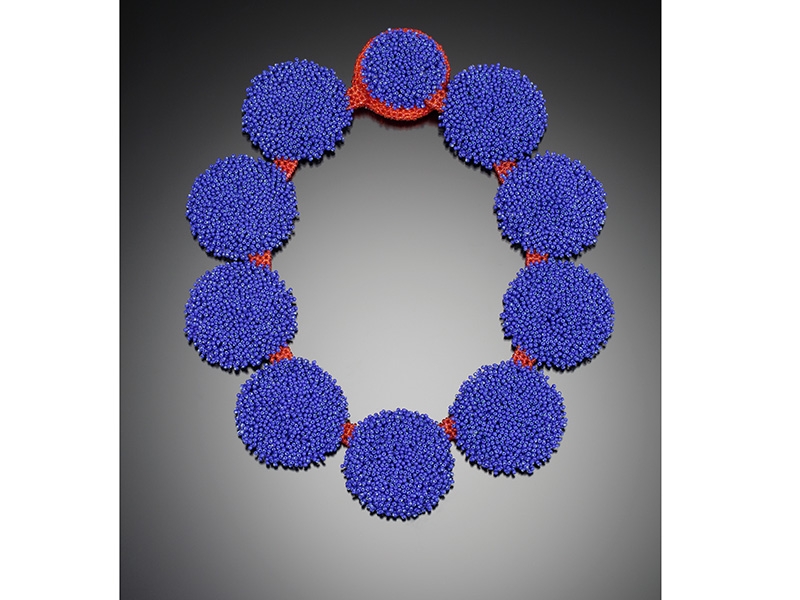 A number of the works on show are of an assemblage aesthetic—Nancy Worden, Bob Ebendorf, and Maria Phillips, in particular, come to mind. Is this solely indicative of the collector’s personal taste, a regional style, or representative of a particular niche in American art jewelry?
A number of the works on show are of an assemblage aesthetic—Nancy Worden, Bob Ebendorf, and Maria Phillips, in particular, come to mind. Is this solely indicative of the collector’s personal taste, a regional style, or representative of a particular niche in American art jewelry?
Meg Shiffler: This is a big question. I’ll take a crack at it. Mia built and solidified her personal aesthetic in the 80s and early 90s. That era of art was broadly focused on figuration, and there was a proliferation of figurative painters who rose to the top tier of the blue-chip galleries. Additionally, there was a revitalization of the junk art aesthetic popular in the 60s, although in the 80s/early 90s it became less playful and more serious, providing form for commentary on issues related to the AIDS epidemic, the Cold War, censorship, globalism, and more. Artists were making collage works and sculptural installations that often took the form of shrines. So figuration and the layering of materials and cultural signifiers were pervasive throughout all forms of contemporary visual art.
Mia also built her aesthetic from her relationship with two specific geographies—the South, where folk art traditions were tied to storytelling, and the Pacific Northwest, where Native American figurative works had impacted artists like Morris Graves and, later, Jay Steensma and many others.
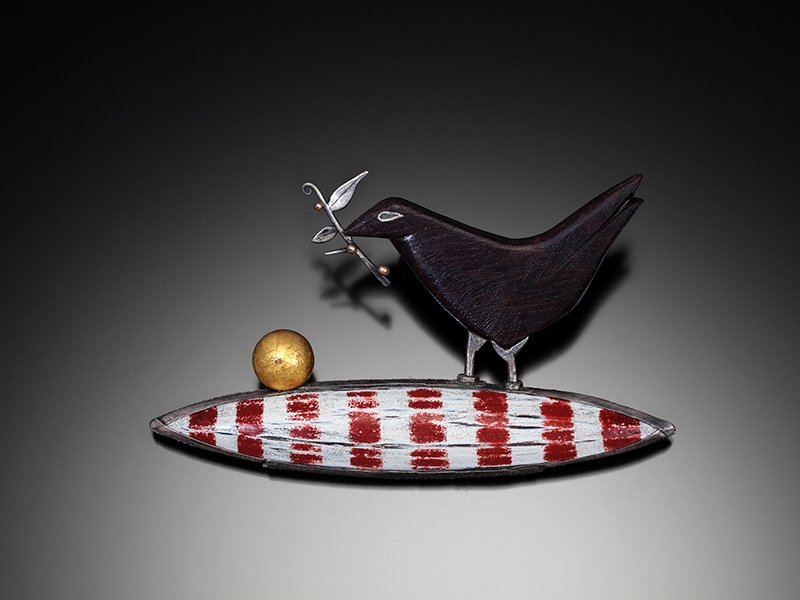 Also, in the 90s, folk art was becoming more widely accepted as a fine art form. Educated artists began unabashedly emulating the naiveté of outsider and folk artists, and contemporary artists who already had a folksy style gained more notoriety. This created the perfect environment for Mia and her gallery, which was full of figurative contemporary artists next to folk and outsider artists.
Also, in the 90s, folk art was becoming more widely accepted as a fine art form. Educated artists began unabashedly emulating the naiveté of outsider and folk artists, and contemporary artists who already had a folksy style gained more notoriety. This created the perfect environment for Mia and her gallery, which was full of figurative contemporary artists next to folk and outsider artists.
Getting back to your questions about the assemblage aesthetic, I would have to say that what was happening in jewelry art, especially with Pacific Northwest jewelers, was reflective of national and international trends in art, and also reflective of the natural trajectory of art in that region regardless of trends. Mia’s collection reflects her personal taste, which was born out of a love for contemporary art, a respect for ethnographic traditional artwork, and a love of folk art and storytelling.
 Thank you, Meg. Nancy Worden, can you start by describing your relationship with Mia?
Thank you, Meg. Nancy Worden, can you start by describing your relationship with Mia?
Nancy Worden: I met Mia not long after I moved to Seattle in the early 80s. She came to one of my Christmas sales and bought a pair of my earrings. Later I bought a Haitian voodoo flag from her and eventually went to work for her at the Mia Gallery in Pioneer Square in 1986. I organized the first jewelry show in that space, and Mia became one of my earliest collectors.
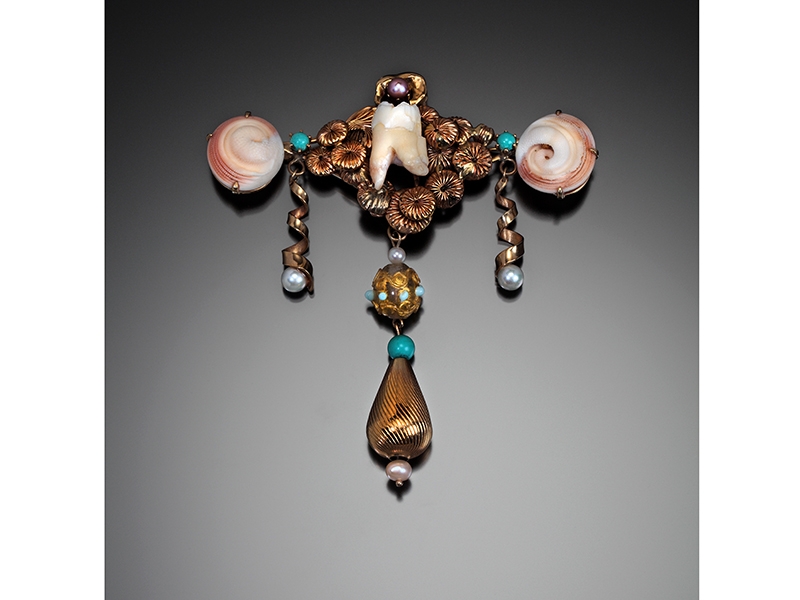 How did TAM come to be the recipient of jewelry collections in the Northwest?
How did TAM come to be the recipient of jewelry collections in the Northwest?
Nancy Worden: In 1997, Tacoma Art Museum hosted a retrospective of Ken Cory’s jewelry and published a catalog to go with the show. After the retrospective, Ken’s sister donated a number of his pieces to their collection. A year later, I was auditing Mary Lee Hu’s history of jewelry class at the University of Washington with a couple of other community members, Karen Lorene and Micki Lippe. After the class we would often go across the hall to Parnassus, the coffee shop in the art building, and talk about the class.
One week I mentioned that TAM would like to have a jewelry collection, but they didn’t have the discretionary funds to build one. The three of us knew who the collectors were, and we decided we would try to raise the money for a jewelry fund. I ran it by the financial person at the museum, and he told me that we needed at least $25,000 to create an endowed fund. Then I called Flora Book and described what we were trying to do, and a few days later she and her husband, Seymour Rabinovitch, wrote the museum a $25,000 check to start the endowment. Flora wanted it named after her friend Ramona Solberg, and she specified that the initial capital could not be spent, just the interest, because she wanted the fund to grow. I also called Mia and she made a contribution.
The jewelry collection at TAM began receiving gifts of jewelry almost immediately. There was such a legacy of jewelry artists in the region, and collecting art from the Pacific Northwest was part of Tacoma’s mission statement. On numerous occasions, Mia and I talked about the Northwest work in her jewelry collection ending up at TAM.
 What role did you play in the acquisition of the Mia McEldowney Collection by the Tacoma Art Museum?
What role did you play in the acquisition of the Mia McEldowney Collection by the Tacoma Art Museum?
Nancy Worden: After Mia died, her husband, Bill Mitchell, contacted me, and so did the museum. The museum curators chose what they wanted from her collection, and the only thing I did was look at all the work and suggest a couple of items that the curators had missed.
How does the bequest add to or enrich TAM’s existing art jewelry collection?
Nancy Worden: Mia gave many artists, including me, their first gallery exhibition opportunity. She often purchased early work by artists who went on to become well known, as well as some who did not. The addition of these early works fortifies the TAM collection; for a collection to have real depth, it needs work from all phases of an artist’s career.
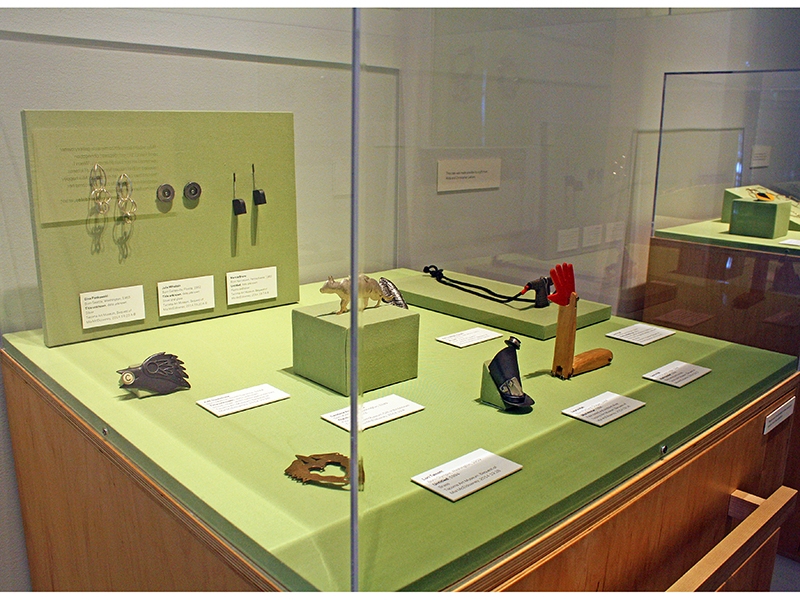
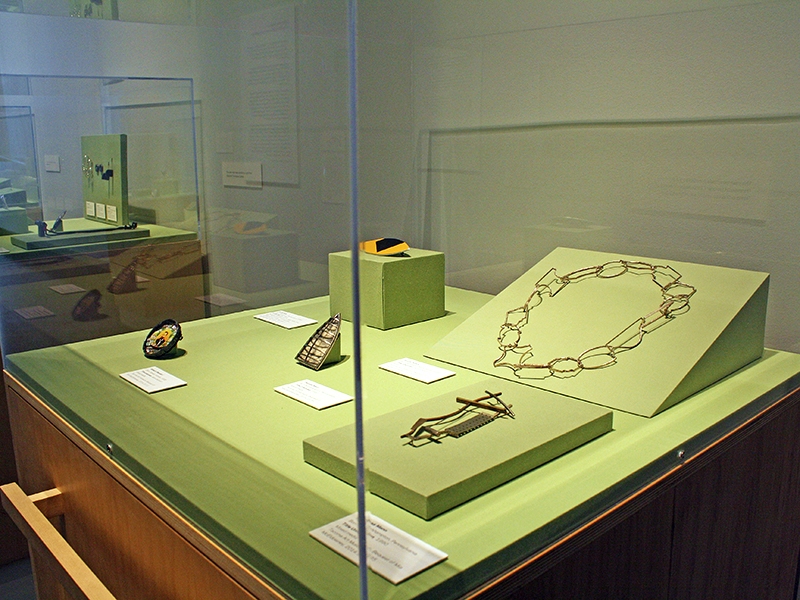 Can you elaborate on the title Well-Worn Narratives?
Can you elaborate on the title Well-Worn Narratives?
Nancy Worden: Well-Worn Narratives is the perfect title for Mia’s collection, as she wore the jewelry pieces constantly.
What do you think visitors took away from their exhibition experience?
Nancy Worden: What I hope they took away from seeing Mia’s collection is that she wore what she loved. Sometimes it was an inexpensive pair of earrings that she bought at a craft fair, sometimes it was a major necklace she purchased from an established artist. She loved all of the work equally.
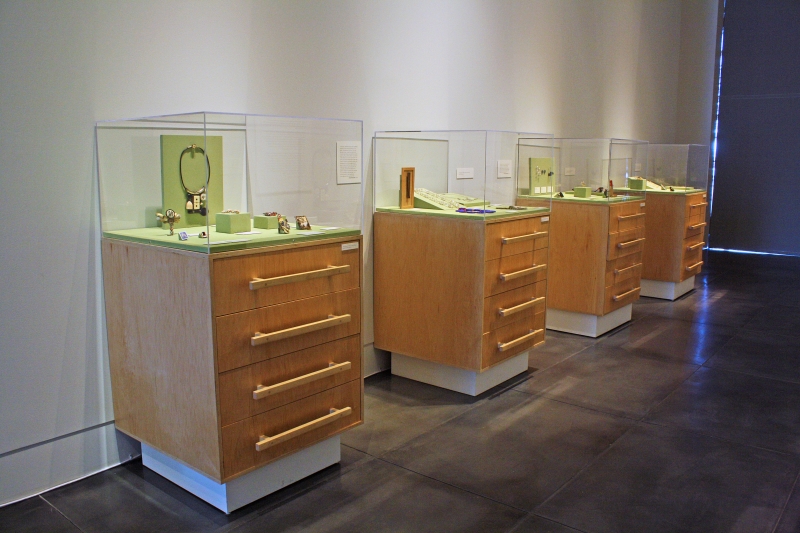 What are some compelling books or other media that you’ve encountered lately that you’d like to share with our audience?
What are some compelling books or other media that you’ve encountered lately that you’d like to share with our audience?
Nancy Worden: Listening to Stone:The Art and Life of Isamu Noguchi,by Hayden Herrera, and Goddesses: Mysteries of the Feminine Divine,by Joseph Campbell. Noguchi’s early influences were a surprise to me, as was as the diversity of his work. He made a lot more than sculpture; he also designed gardens and stage sets for Martha Graham.
Joseph Campbell is often the place where I start when I’m conceiving a new body of work. My work is about human behavior and empowering women, and mythology never disappoints me for source material.


